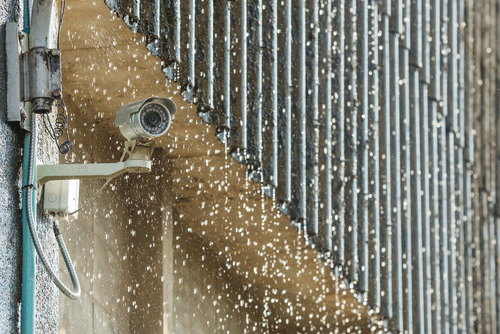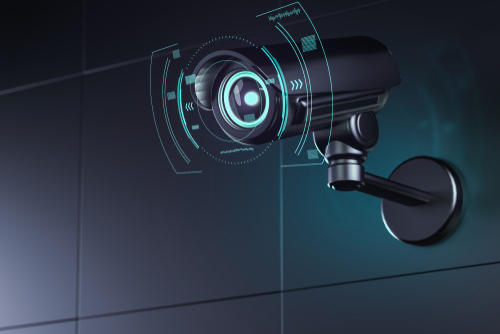To expand your news reach, consider advertising with our media partner, Patch Media, at https://heypapipromotionsmedia.town.news/. Patch is a nationwide news network comprising over 1,000 hyperlocal websites dedicated to community news across the United States. For press release distribution services, please call or visit https://heypapipromotions.com/advertise.
Rain can pose a significant threat to the functionality and longevity of your CCTV camera system. Without proper protection, water damage can lead to costly repairs or even the need for replacement. Fortunately, there are several strategies you can implement to safeguard your CCTV cameras from rain and ensure uninterrupted surveillance. In this article, we'll explore seven effective methods to protect your CCTV cameras from rain and maintain their optimal performance.
8 Effective Ways to Shield Your CCTV Camera from Rain
1.Choose Weatherproof CCTV Cameras
Invest in CCTV cameras specifically designed to withstand harsh weather conditions, including rain. Look for cameras with an IP66 or higher rating, indicating resistance to water and dust ingress. These weatherproof cameras are built to endure outdoor elements, providing reliable surveillance even during heavy rainfall.
2.Keep Your Camera out of the Rain
One straightforward method to safeguard your outdoor CCTV camera from rain involves keeping it sheltered from the elements. If your camera is already exposed outdoors, consider installing a tarpaulin or canopy above it to provide adequate protection.
Depending on the camera's positioning and the anticipated weather conditions, periodic relocation may be required. For instance, if your camera is oriented northward, placing it beneath an umbrella might lead to water accumulation on the lens, necessitating occasional adjustments to ensure optimal coverage.
Depending on the camera's positioning and the anticipated weather conditions, periodic relocation may be required. For instance, if your camera is oriented northward, placing it beneath an umbrella might lead to water accumulation on the lens, necessitating occasional adjustments to ensure optimal coverage.
3.Install Camera Housings

Camera housings act as protective enclosures for CCTV cameras, shielding them from rain and other environmental hazards. Opt for housings made from durable materials like aluminum or polycarbonate, ensuring they can withstand exposure to moisture without compromising camera functionality. Additionally, choose housings with built-in heaters or defoggers to prevent condensation during rainy weather.
4.Put It in a Well-Ventilated Space
For optimal performance, it's crucial to place outdoor CCTV cameras in well-ventilated areas to ensure image quality remains high. Keeping the camera dry is essential to prevent moisture-related deterioration of video quality or potential malfunctions.
To safeguard your outdoor CCTV camera from rain, take preventive measures to avoid exposure to moisture. Thoroughly inspect the installation area for any openings where rainwater could infiltrate, including downstairs windows or other vulnerable spots. Utilize plastic barriers or waterproof coverings as an additional safeguard against rain penetration through these areas.
Furthermore, consider the camera's positioning to minimize water contact with the lens. Installing the camera at an angle tailored to your specific requirements and location can effectively deflect water and prevent droplet accumulation, preserving image clarity.
Opting for a wireless outdoor CCTV installation service is another option to eliminate outdoor cable runs. However, bear in mind that this may entail drilling holes through building exteriors and roofs to mount antennas and sensor wires at suitable heights. Evaluate these factors carefully before determining the placement and height of your wires.
To safeguard your outdoor CCTV camera from rain, take preventive measures to avoid exposure to moisture. Thoroughly inspect the installation area for any openings where rainwater could infiltrate, including downstairs windows or other vulnerable spots. Utilize plastic barriers or waterproof coverings as an additional safeguard against rain penetration through these areas.
Furthermore, consider the camera's positioning to minimize water contact with the lens. Installing the camera at an angle tailored to your specific requirements and location can effectively deflect water and prevent droplet accumulation, preserving image clarity.
Opting for a wireless outdoor CCTV installation service is another option to eliminate outdoor cable runs. However, bear in mind that this may entail drilling holes through building exteriors and roofs to mount antennas and sensor wires at suitable heights. Evaluate these factors carefully before determining the placement and height of your wires.
5.Position Cameras Under Overhangs
Strategically place CCTV cameras under eaves, awnings, or other overhangs to minimize exposure to rain. Mounting cameras in sheltered locations helps reduce the risk of water damage and prolongs their lifespan. Be sure to consider the camera's field of view and ensure it remains unobstructed by nearby structures or foliage.
6.Use Rain Guards or Shields
Rain guards or shields provide an additional layer of protection for CCTV cameras exposed to outdoor elements. These accessories are designed to deflect rainwater away from the camera lens, preventing water droplets from obstructing the view or causing image distortion. Install rain guards securely to ensure they remain in place during inclement weather conditions.
7.Use a Heat Bulb for Moisture Protection
If safeguarding your outdoor CCTV camera from rain is a priority, there are several effective methods you can employ.
One approach is to utilize an infrared heat bulb, which can shield your camera in damp conditions. When the outdoor temperature exceeds 50 degrees Fahrenheit, the heat emitted by the bulb acts as a barrier against moisture. However, this solution may not be suitable for colder climates or freezing temperatures.
Alternatively, installing a heating system equipped with a steel mesh cover offers another level of protection for your outdoor CCTV camera during rainy weather. The mesh cover facilitates heat dissipation while ensuring the camera remains shielded from moisture.
For added protection, consider using heating mats, ensuring they are adequately insulated to prevent overheating and potential surface damage.
Another effective strategy is to incorporate floodlights with enclosures or domes around them. These fixtures not only keep water away from the light source but also provide excellent illumination for nighttime surveillance.
To safeguard both lights and cameras, installing waterproof housings can prevent moisture ingress and protect internal components from corrosion or damage.
Creating an enclosure specifically for your outdoor CCTV camera offers an additional layer of defense against rain and harsh weather conditions. This enclosure provides protection while maintaining visibility, particularly during low-light periods such as dusk or dawn.
One approach is to utilize an infrared heat bulb, which can shield your camera in damp conditions. When the outdoor temperature exceeds 50 degrees Fahrenheit, the heat emitted by the bulb acts as a barrier against moisture. However, this solution may not be suitable for colder climates or freezing temperatures.
Alternatively, installing a heating system equipped with a steel mesh cover offers another level of protection for your outdoor CCTV camera during rainy weather. The mesh cover facilitates heat dissipation while ensuring the camera remains shielded from moisture.
For added protection, consider using heating mats, ensuring they are adequately insulated to prevent overheating and potential surface damage.
Another effective strategy is to incorporate floodlights with enclosures or domes around them. These fixtures not only keep water away from the light source but also provide excellent illumination for nighttime surveillance.
To safeguard both lights and cameras, installing waterproof housings can prevent moisture ingress and protect internal components from corrosion or damage.
Creating an enclosure specifically for your outdoor CCTV camera offers an additional layer of defense against rain and harsh weather conditions. This enclosure provides protection while maintaining visibility, particularly during low-light periods such as dusk or dawn.
8.Adjust Your Camera Sensitivity To Detect More Rain Drops

A common challenge faced with outdoor CCTV cameras is their sensitivity settings. Without proper adjustment, detecting raindrops and subtle environmental changes becomes challenging.
Fortunately, resolving this issue is straightforward. By accessing your camera's "brightness" setting and increasing it by just 5%, you enhance its ability to detect raindrops effectively.
Alternatively, enabling automatic motion detection on your camera proves beneficial for outdoor surveillance. This feature detects any nearby movements, offering comprehensive coverage for your business premises.
Ensure that your motion detection settings align with the size of objects you intend to monitor. Tailoring the sensitivity accordingly ensures accurate detection, distinguishing between individuals and larger entities like animals or vehicles passing by.
While preventing rain ingress entirely can be tricky, there are measures you can take to mitigate moisture exposure to your CCTV system.
Elevating the camera placement reduces the risk of rain penetration. Additionally, sealing the camera window with silicone or window sealant serves as a barrier against water intrusion.
If utilizing a heat bulb, installing a thermostat is advisable to regulate its temperature and prevent overheating, which could potentially damage the camera.
Ultimately, the most effective approach to safeguarding your camera from rain is to prevent exposure altogether. This can be achieved by enclosing the camera in a waterproof housing or positioning it in a well-ventilated area.
Fortunately, resolving this issue is straightforward. By accessing your camera's "brightness" setting and increasing it by just 5%, you enhance its ability to detect raindrops effectively.
Alternatively, enabling automatic motion detection on your camera proves beneficial for outdoor surveillance. This feature detects any nearby movements, offering comprehensive coverage for your business premises.
Ensure that your motion detection settings align with the size of objects you intend to monitor. Tailoring the sensitivity accordingly ensures accurate detection, distinguishing between individuals and larger entities like animals or vehicles passing by.
While preventing rain ingress entirely can be tricky, there are measures you can take to mitigate moisture exposure to your CCTV system.
Elevating the camera placement reduces the risk of rain penetration. Additionally, sealing the camera window with silicone or window sealant serves as a barrier against water intrusion.
If utilizing a heat bulb, installing a thermostat is advisable to regulate its temperature and prevent overheating, which could potentially damage the camera.
Ultimately, the most effective approach to safeguarding your camera from rain is to prevent exposure altogether. This can be achieved by enclosing the camera in a waterproof housing or positioning it in a well-ventilated area.
Conclusion
Protecting your CCTV cameras from rain is essential for ensuring their long-term functionality and reliability. By implementing the strategies outlined in this article, you can effectively shield your cameras from rainwater and maintain uninterrupted surveillance coverage. Remember to invest in weatherproof cameras, utilize protective accessories, and conduct regular maintenance to safeguard your CCTV system against the damaging effects of rain. With proper protection in place, you can have peace of mind knowing that your surveillance equipment is prepared to withstand whatever the weather may bring.
PreviousBack to listNext
Comments